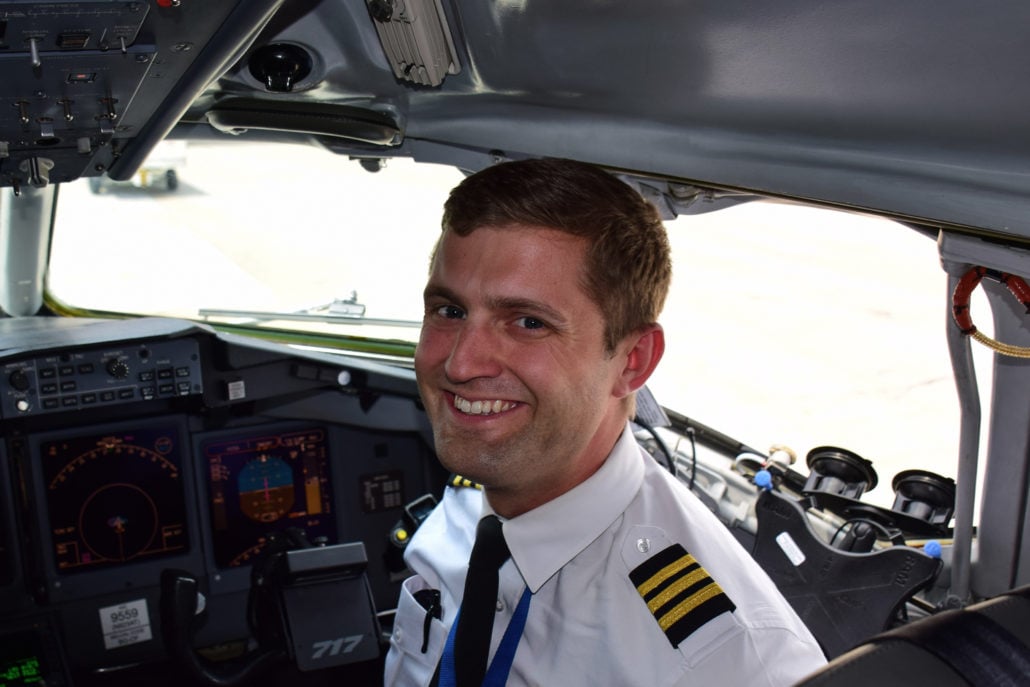
In our Ask a Pilot series, pilot Spencer Marker answers one of your aviation-related questions each week. See past installments here and submit your own to Whitney@johnnyjet.com.
The question
Last week on a flight to New York, the pilot told us that we would start an engine at the gate because the APU wasn’t working. What is an APU exactly?
—Zachary
The answer
Hey Zachary. Thanks for writing in and thank you for the excellent question. Pilots as a group are bombarded everyday by acronyms. Sometimes, we use share these acronyms with a plane full of people who have zero idea what we are talking about. But alas, that’s why I’m here!
And to answer your question, APU stands for “Auxiliary Power Unit.” I describe the APU to people outside of aviation as such: It’s a small jet engine at the tail (not always, though) that large airplanes use on the ground for electricity and air conditioning. Air from the APU is also used to start the airplane’s engines. Nearly all commercial jet aircraft have them, yet only a few propeller planes have them due to weight considerations. And while they make a pilot’s life easier, the “Auxiliary” in Auxiliary Power Unit means that it isn’t always required. Let’s take a deeper look at what pilots use the APU for.
Electricity
The APU in an airplane operates exactly like the engines on a plane’s wings. Quite simply, it’s a small jet engine. But rather than being connected to a fan or propeller, the APU is connected to a generator. When it’s running, this allows the airplane to remain powered with the engines off. While airplanes do have batteries, they are used primarily for emergencies and starting the APU, not as a source of power on the ground.
Air
Another use of the APU is providing pressurized air. This air is compressed in exactly the same way that the engines compress air before it’s burned and used to create thrust. This high pressure air is bled (read: diverted) off the APU before it’s burned and ducted to systems in the airplane.
Pilots use this high pressure air in a couple ways. First, the air from our APU is used to run the airplane’s air conditioners (we call them packs) while the jet is on the ground with the engines off. This regulates cabin temperature and comes in handy on hot or cold days.
Secondly, APU air is used as the primary way pilots start the airplanes engines. This may sound a little unusual, but most jet engines are started using pneumatic or air pressure. Unlike your car, which uses electricity from the battery to turn the starter and thereby the engine, an airplane uses high-pressure air to spin an air-turbine starter. Air is blown over this pinwheel-like starter, which is connected to the engine. Once the starter begins to spin, the engine will also spin. Add fuel and ignition and you’re on your way!
So what if it isn’t working?
As I stated above, the ‘A’ in APU stands for “auxiliary” simply because its use isn’t required for a safe flight. So Zachary, when an airplane like yours has an APU that isn’t working, pilots and ground crews must work together to make sure the airplane stays cool (or warm in the winter), is connected to power, and can be started with minimal delay.
An airplane with a broken APU can still be operated safely. We manage temperature by attaching ground air conditioning. This is a standard A/C unit attached to the jetway and connected to the airplane by a big yellow hose.
During these instances, ground crews must also diligently hook up ground power (think extension cord) from the jetbridge to the receptacle on the airplane as soon as possible after arrival. That way, the airplane always has a steady source of electrical power. Airlines use ground power regularly as it allows pilots to shutdown the APU and save fuel.
Starting the airplane without the APU is slightly more complicated. Ground agents will connect a ground pneumatic source. This could be a jet APU on wheels, a diesel engine connected to an air compressor (makes a really loud noise!), or a large pressurized bottle filled with air. This source of pressurized air is connected into the airplane. The engines use this compressed air to turn the starter, the engine is started and the flight proceeds normally.
To sum up
The APU is one of the best “nice to have” features on the airplane. It allows pilots to operate aircraft systems independently of ground-based equipment and start our engines on our own. That said, the airlines and the FAA agree on certain procedures to make its use optional. Steps are taken by both the airline and pilots to ensure the same degree of safety regardless.
Thanks for the excellent question this week, Zachary. I love explaining things that fall into pilot vernacular but aren’t widely known by most of the traveling public. Plus, now you can impress your friends by telling them that a 747 doesn’t have four engines, but five!
Thanks again for your question! If you have any APU-related comments, feel free to post below. And if anyone have a burning aviation question or something you would like cleared up, drop us a line at Whitney@johnnyjet.com to get your question featured in an upcoming Ask a Pilot column.
Tailwinds,
—Spencer







